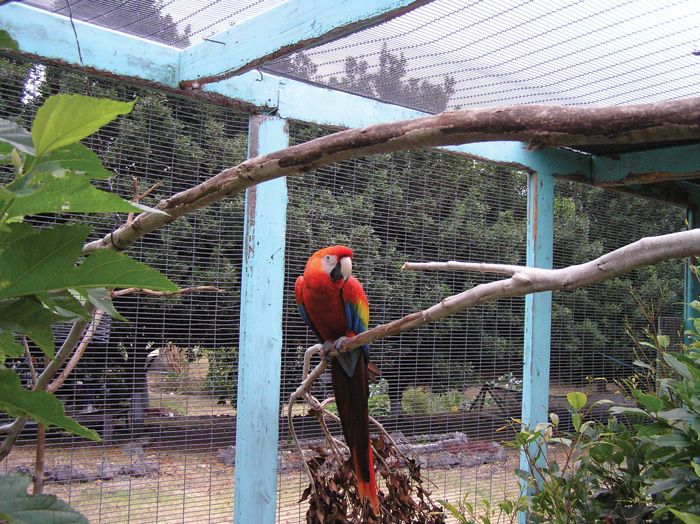 If you have a wooden outside flight attached to a solid (concrete or slab) base, you can run into problems with rot if the panels are resting directly on the hard surface. Water can collect and cause problems. Raising the flight about half an inch, by using non-corroding spacers, will ensure there is a gap that will allow wet timber to dry out and, therefore, avoid rotting problems. Similarly with metal flights, the same can be done especially if the panels are painted and where there can be a risk of corrosion. In all cases, it is advisable to securely fix the flight to a hard base. Using a hard base, with slightly raised side panels, will make cleaning easy, as well as keeping out unwanted visitors. But ensure any
If you have a wooden outside flight attached to a solid (concrete or slab) base, you can run into problems with rot if the panels are resting directly on the hard surface. Water can collect and cause problems. Raising the flight about half an inch, by using non-corroding spacers, will ensure there is a gap that will allow wet timber to dry out and, therefore, avoid rotting problems. Similarly with metal flights, the same can be done especially if the panels are painted and where there can be a risk of corrosion. In all cases, it is advisable to securely fix the flight to a hard base. Using a hard base, with slightly raised side panels, will make cleaning easy, as well as keeping out unwanted visitors. But ensure any
space between a flight and
the ground will not allow any
of the occupants to escape!
Photo: Eb Cravens

If you are considering volunteering to help animals overseas, during the last year Parrots Magazine has published details of some projects that have been undertaken:
Jul 2013: Dept of Environment & Conservation, Australia; www.dec.wa.gov.au
Dec 2013: ECHO, Bonaire, Caribbean; www.echobonaire.org
Jan 2014: La Senda Verde, North Yungas, Bolivia; www.sendaverde.com/volunteer-program.html
Feb 2014: Fundacion Pro-Bosque, Cerro Blanco Protected Forest, Ecuador; www.bosquecerroblanco.org
Mar 2014: Merazonia Animal Refuge, Ecuador; www.merazonia.org
Apr 2014: Belize Bird Rescue, Cayo District, Belize; www.belizebirdrescue.com/volunteer.html
May 2014: Utila Iguana Conservation Project, Utila Island, one of the Bay Islands, off Honduras; www.utila-iguana.de
Jun 2014: ARA Project, Costa Rica; www.thearaproject.org
Jul 2014: Kosgoda Sea Turtle Conservation Project, Sri Lanka; www.kosgodaseaturtle.org
Aug 2014: Esperanza Verde, Peru; www.esperanzaverdeperu.com
Not all the projects are to help with parrots, but nevertheless, they may be of interest. Please note that since publication, the projects may vary or have stopped, so please check on the websites for current volunteering opportunities.
 If you have a wooden outside flight attached to a solid (concrete or slab) base, you can run into problems with rot if the panels are resting directly on the hard surface. Water can collect and cause problems. Raising the flight about half an inch, by using non-corroding spacers, will ensure there is a gap that will allow wet timber to dry out and, therefore, avoid rotting problems. Similarly with metal flights, the same can be done especially if the panels are painted and where there can be a risk of corrosion. In all cases, it is advisable to securely fix the flight to a hard base. Using a hard base, with slightly raised side panels, will make cleaning easy, as well as keeping out unwanted visitors. But ensure any
If you have a wooden outside flight attached to a solid (concrete or slab) base, you can run into problems with rot if the panels are resting directly on the hard surface. Water can collect and cause problems. Raising the flight about half an inch, by using non-corroding spacers, will ensure there is a gap that will allow wet timber to dry out and, therefore, avoid rotting problems. Similarly with metal flights, the same can be done especially if the panels are painted and where there can be a risk of corrosion. In all cases, it is advisable to securely fix the flight to a hard base. Using a hard base, with slightly raised side panels, will make cleaning easy, as well as keeping out unwanted visitors. But ensure any

